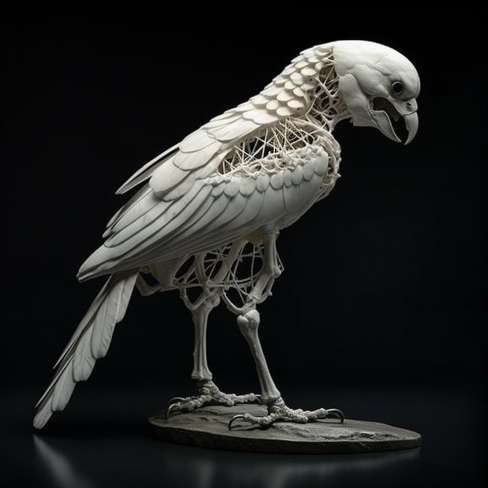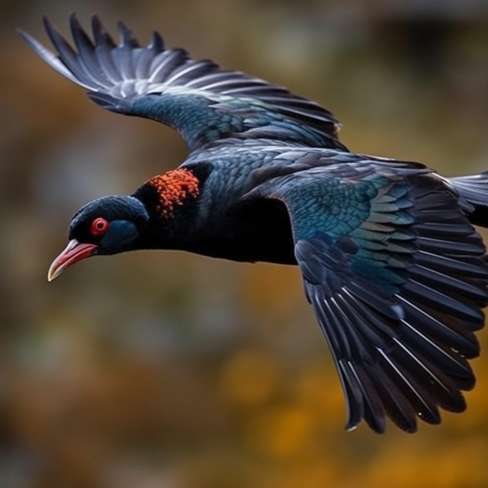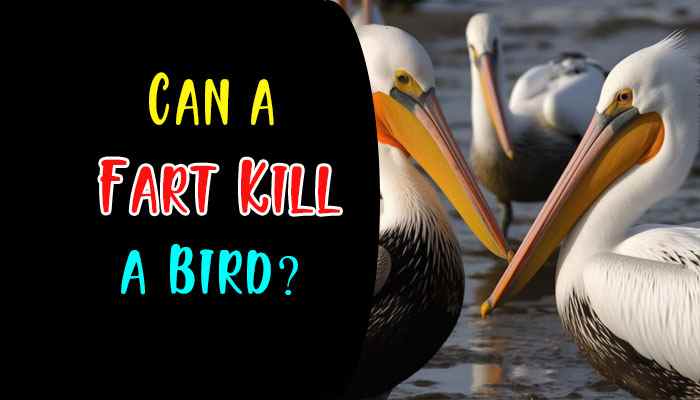Discovering Bird Anatomy: Understanding Their Unique Adaptations
Birds, with their graceful flight and melodic songs, have captivated humans for centuries. These magnificent creatures exhibit a wide range of adaptations that have allowed them to conquer various ecosystems worldwide.
In this in-depth article, I will explore the intricacies of bird anatomy and delve into the fascinating adaptations that set them apart from other creatures. Join us on this journey of discovery as we uncover the secrets of how birds have evolved to become true masters of the sky.
Bird Anatomy- Avian Skeletal System: Lightweight Yet Strong

Birds possess a remarkable skeletal system that provides them with the perfect balance of strength and lightness, essential for flying. Their bones are hollow and filled with air, reducing overall weight while maintaining structural integrity. The fusion of certain bones, such as the fusion of the skull, makes their skeletons rigid and stable, enhancing their aerodynamic capabilities.
The Marvelous Avian Beak: A Multi-Purpose Tool
The beak, a defining feature of birds, is a versatile and adaptive tool that serves various purposes depending on the species. From the long, probing beaks of hummingbirds to the strong, sturdy beaks of birds of prey, these adaptations enable birds to feed on specific types of food and thrive in their unique environments.
Wings: The Key to Aerial Mastery
Birds’ wings are intricately designed to achieve efficient and controlled flight. The arrangement of feathers and the shape of the wing contribute to lift and maneuverability. The wing’s primary feathers act as airfoils, generating lift as air flows over them during flapping motion.
Plumage: More Than Just Feathers

Birds’ plumage is more than just a display of beauty; it serves vital functions such as insulation, camouflage, and communication. Feathers come in various forms, including down feathers for insulation, contour feathers for flight, and specialized feathers for courtship displays.
Adaptable Feet and Talons: The Perfect Landing Gear
Birds’ feet have evolved to suit their unique lifestyles. From the webbed feet of aquatic birds, allowing graceful swimming, to the powerful talons of raptors, perfect for capturing prey, these adaptations enable birds to thrive in diverse habitats.
Avian Respiratory System: A Breath of Fresh Air
The avian respiratory system is incredibly efficient, allowing birds to obtain more oxygen during flight. Their lungs are connected to air sacs distributed throughout the body, ensuring a continuous flow of oxygen-rich air even during both inhalation and exhalation.
Unique Avian Vocalizations: Songs of Communication
Birds are renowned for their melodious songs and distinct calls. These vocalizations serve various purposes, including attracting mates, marking territories, and communicating with flock members.
Bird Migration: The Great Journeys
One of the most awe-inspiring phenomena in the avian world is bird migration. Birds undertake incredible journeys, covering thousands of miles, to reach their breeding or wintering grounds. This remarkable behavior is a testament to their adaptation and survival skills.
Avian Vision: Seeing the World Differently
Birds possess exceptional vision, allowing them to spot prey from great distances and navigate through complex environments. Many birds have specialized adaptations, such as a higher density of photoreceptor cells, enabling them to perceive ultraviolet light.
Courtship and Mating Rituals: Nature’s Spectacle
Bird courtship rituals are both charming and intricate, involving various displays of plumage, vocalizations, and dances. These elaborate rituals play a crucial role in pair bonding and mate selection.
The Wonders of Nest Building
Birds showcase incredible architectural skills when it comes to building nests. Each species creates a unique nest design, carefully selecting materials and locations that suit their specific needs.
Understanding Avian Intelligence
Birds have demonstrated remarkable intelligence in problem-solving and tool use. Some species exhibit complex cognitive abilities, challenging conventional notions of animal intelligence.
The Role of Birds in Seed Dispersal

Birds play a vital role in seed dispersal, promoting plant growth and ecosystem diversity. They consume fruits and berries, carrying the seeds to new locations where they may germinate and grow.
The Art of Foraging
Birds have developed various foraging techniques, from aerial hunting to ground pecking, enabling them to obtain food efficiently based on their dietary preferences.
Avian Parenting: Nurturing the Next Generation
Parental care in birds varies widely across species. Some birds exhibit monogamous relationships and share parental duties, while others practice communal nesting and rely on the entire flock to care for offspring.
Beak Specializations: A World of Differences
The diversity of beak shapes and sizes among birds is astonishing. Each beak adaptation is finely tuned to a specific diet, reflecting the evolutionary journey of each species.
Avian Endurance: Long-Distance Flyers

Certain bird species are renowned for their endurance and long-distance flights. Whether crossing continents or navigating treacherous weather, these remarkable birds demonstrate exceptional stamina.
Human Interaction with Birds: Conservation and Ethical Considerations
As humans continue to encroach upon natural habitats, understanding the impact of our actions on bird populations is vital. Conservation efforts and ethical considerations are essential to protect the diverse avian species worldwide.
FAQs
How do birds fly for such extended periods without getting tired?
Birds’ efficient respiratory system and lightweight skeletal structure contribute to their remarkable endurance during flight. Additionally, they can enter a state of unihemispheric slow-wave sleep, allowing one hemisphere of their brain to rest while the other remains awake to monitor their surroundings and maintain flight.
Why do some birds have brightly colored plumage?
Brightly colored plumage often serves as a means of attracting mates or deterring rivals. These colors are achieved through pigments in the feathers or structural coloration, which creates iridescence.
How do birds navigate during migration?
Birds use various cues for navigation during migration, including the position of the sun, stars, Earth’s magnetic field, and familiar landmarks. Some species may also rely on following specific geographical features, such as coastlines or mountain ranges.
Are all bird species capable of mimicry?
No, not all bird species possess the ability to mimic sounds. Mimicry is more commonly observed in certain groups, such as parrots and starlings, which have specialized vocal structures allowing them to imitate a wide range of sounds.
What is the purpose of courtship displays in birds?
Courtship displays serve to attract potential mates and demonstrate the fitness and health of the displaying bird. These displays often involve complex movements, vocalizations, and visual signals.
How do birds build their nests without hands?
Birds use their beaks and feet to gather materials, such as twigs, leaves, and mud, to construct their nests. The process involves careful weaving and arranging of materials to create a secure and comfortable environment for their eggs and chicks
Conclusion
The world of bird anatomy and unique adaptations is a testament to the wonders of nature’s creativity and diversity. From their lightweight yet sturdy bones to their astonishing navigational abilities, birds have evolved to thrive in diverse environments.
Understanding and appreciating these adaptations not only enriches our knowledge but also reminds us of the importance of preserving the habitats that support these magnificent creatures.
So the next time you spot a bird soaring through the sky or singing from a branch, take a moment to marvel at the incredible journey of discovery that is “Discovering Bird Anatomy: Understanding Their Unique Adaptations.”




